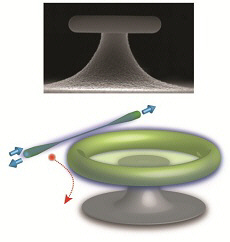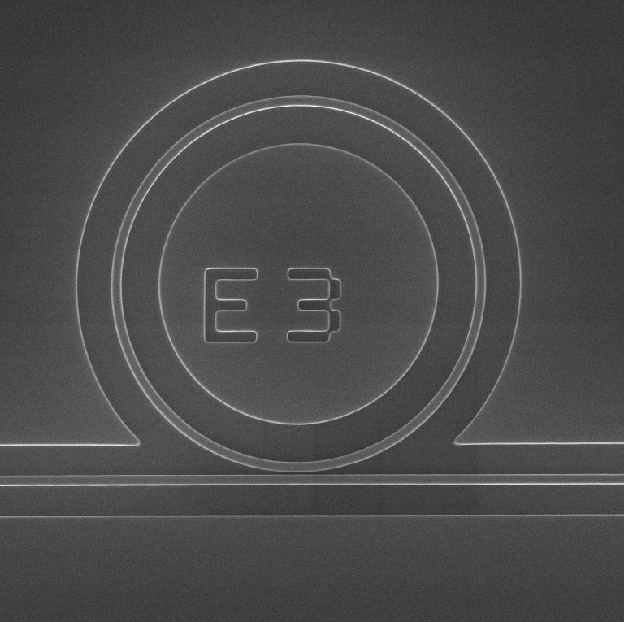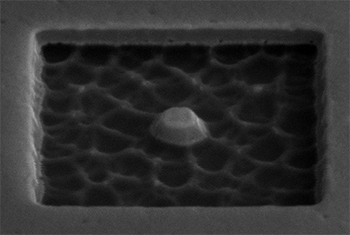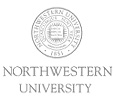Past Projects
-

Quantum Optics with Atomic and Solid-State Systems
Strong coupling in cavity quantum electrodynamics (cQED) with atoms and micro-resonators enables coherent interactions between matter and light to dominate irreversible dissipation in a scalable quantum node with high photonic coupling efficiency. Our recent work has focused on a new regime of cQED where an atom can be strongly coupled to a single photon in a whispering-gallery resonator while at the same time experiencing significant perturbative radiative interactions with the dielectric boundaries of the cavity. This work sets the stage for trapping atoms near micro- and nano-scopic optical resonators and offers motivation for harnessing on-chip photonic elements for solid-state applications in quantum information science and nanoscience.
-
For further information, see:
- D. J. Alton, N. P. Stern, Takao Aoki, H. Lee, E. Ostby, K. J. Vahala, and H. J. Kimble
“Strong interactions of single atoms and photons near a dielectric boundary.”
Nature Physics 7, 159 (2011).
- H. J. Kimble.
“The Quantum Internet.”
Nature, 453, 1023 (2008). -

Cavity-QED with Non-transverse Photons
The interaction between light and matter can be significantly enhanced by confining photonics in an optical cavity. We take advantage of non-transverse photon polarization in near-field photonic cavities to enhance optical coupling to spin systems. We use state of the art electron beam lithography to fabricate micro-scale resonance cavities embedded with quantum dots, with an eye toward integrated photonic circuits.
-
For further information, see:
- G. Wei, T. K. Stanev, D. A. Czaplewski, I. W. Jung, and N. P. Stern
“Silicon-nitride photonic circuits interfaced with monolayer MoS2.”
Appl. Phys. Lett., 107, 091112 (2015)
- E. J. Lenferink, G. Wei, and N. P. Stern
“Coherent optical non-reciprocity in axisymmetric resonators.”
Optics Express, 22, 16099-16111 (2014)
-

Quantum Phenomena in Plasmonic Nanocavities
Metallic plasmonic nanocavities with embedded quantum emitters provide a new playground to explore quantum phenomena below the diffraction limit. In particular, we design nanostructures consisting of two coupled metal discs separated by a thin insulating layer, which contains a self-assembled quantum dot monolayer. This MIM nanocavity supports strong field confinement in the gap and an ultrasmall mode volume. By engineering the size and dielectric functions of the metal nanostructures, we can study quantum effects at the nanoscale such as enhanced spontaneous emission or plasmonic super-radiant state.
-
For further information, see:
- D. J. Park, J. C. Ku, L. Sun, C. M. Lethiec, N. P. Stern, G. C. Schatz, and C. A. Mirkin
“Directional emission from dye-functionalized plasmonic DNA superlattice microcavities.”
Proceedings of the National Academy of Sciences, Early Edition (2017)
-
The Spin Hall Effect in Semiconductors
Spin-orbit interactions entwine spin polarization with carrier motion, enabling experimental schemes to both generate and manipulate spin polarization using only electric fields in non-magnetic semiconductors. Spin polarization can be electrically generated by the spin Hall effect, which causes spins of opposite polarization to segregate to either side of a conducting channel due to the spin-orbit interaction. Since its first experimental discovery in 2004, the spin Hall effect has been observed in materials at cryogenic temperatures and up to room temperature in wide band-gap semiconductors and metals. Additional recent experiments mapped out the drift and diffusion of spin currents generated by the spin Hall effect both in the temporal and spatial domain using optical spectroscopy with sub-nanosecond, sub-micron resolutions.
For further information, see: - N. P. Stern, et al. “Time-resolved dynamics of the spin Hall effect.” Nature Physics4, 843 (2008).
- N. P. Stern, et al. "Drift and diffusion of spins generated by the spin Hall effect.” Appl. Phys. Lett.91, 062109 (2007).
- N. P. Stern, et al. “Current-Induced Polarization and the Spin Hall Effect at Room Temperature”, Phys. Rev. Lett. 97, 126603 (2006).
-
Quantum Confinement of Magnetic Semiconductors
Carriers play a central role in mediating magnetism in ferromagnetic semiconductors. The precise determination of exchange couplings and the role of carrier confinement in altering those couplings is an important step in understanding and harnessing magnetic interactions, but typical optical techniques for exchange measurements are complicated by the poor optical quality of this material. Working in the paramagnetic regime has allowed time-resolved optical measurements of electron coherence in lightly Mn-doped quantum wells. An antiferromagnetic exchange between s-symmetry conduction band electrons and electrons localized in the d-shell of the Mn2+ impurities was observed in quantum wells which depends strongly on the one-dimensional quantum confinement due to the band-mixing through kinetic exchange.
For further information, see: - N. P. Stern, et al. “Confinement engineering of s-d exchange interactions in GaMnAs quantum wells”, Phys. Rev. B 75, 045329 (2007).
- Myers, et al. “Antiferromagnetic s – d exchange coupling in GaMnAs,” Phys. Rev. Lett. 95, 017204 (2005).


